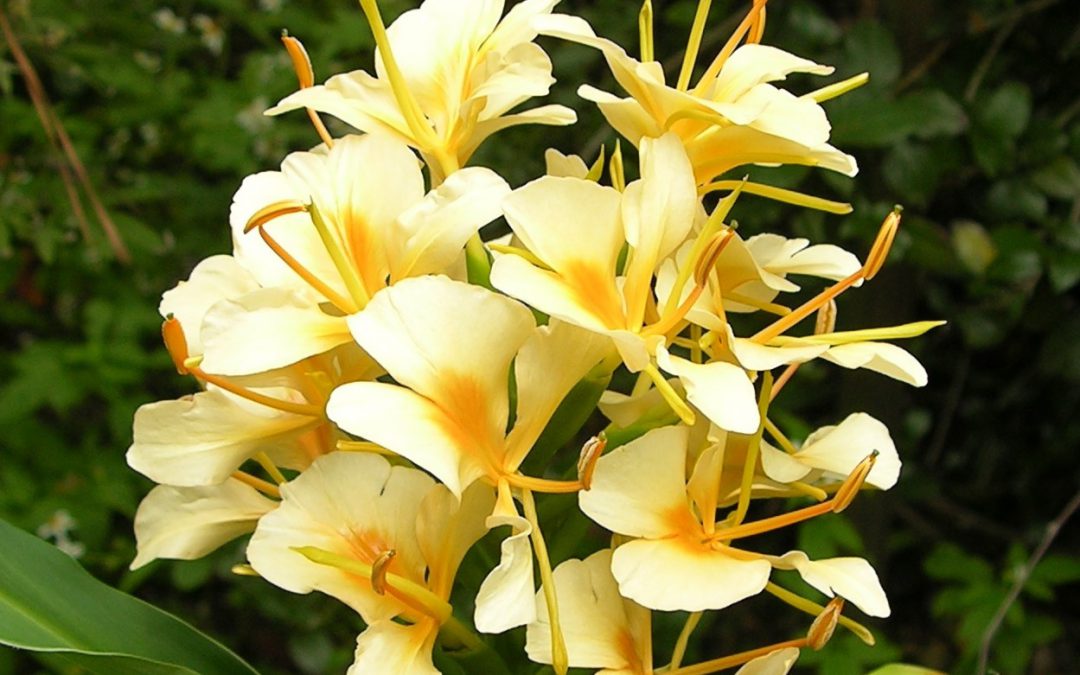
by Gary Knox | Jun 17, 2021
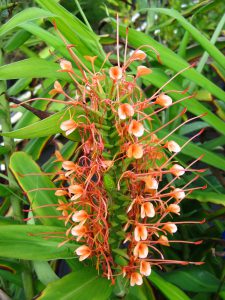
‘Disney’ scarlet ginger lily produces beautiful orange flower clusters atop stems growing up to 7 feet in height
If you’re looking for colorful flowers with superpowered fragrance, look no farther than ginger lily (Hedychium sp.). This group of plants packs a punch with big, bright flowers, intoxicating fragrance and bold tropical foliage, all in a robust herbaceous perennial that is perfectly hardy in north Florida.
Ginger lilies are tropical and subtropical plants in the Zingiberaceae (Ginger) Family. They produce fragrant, colorful, complex flowers and often other plant parts also are aromatic. Ginger lily flowers appear in racemes or spikes at the tops of cane-like stems 4 to 6 feet or more in height. Flowering summer until frost, the clumps of upright stems grow from thick rhizomes that creep underground just below the soil surface. Native to Asia and related to the spice, true ginger (Zingiber officinale), ginger lilies will add color, fragrance and a tropical vibe to your home garden.
Ginger lilies grow best in full to part sun in rich, moist, well-drained soil. New stems emerge in late spring and quickly grow into upright stems with long, bold-textured leaves held horizontally or angled upright. The cane-like stems are topped with clusters of large, bright colored flowers starting in late spring to mid summer, often continuing through fall. Frosts or freezes will kill the above-ground stems, but rhizomes easily overwinter temperatures as low as 0°F (making them hardy into USDA Cold Hardiness Zone 7b) and produce new growth in late spring once warm weather resumes. Few pests or diseases affect ginger lily, and the only regular maintenance is to cut and remove the dead stems in late winter before new growth emerges.
Butterfly ginger is the type most widely grown and frequently shared as a pass-along plant. Butterfly ginger (Hedychium coronarium) is grown for its large fragrant white flowers. It grows 4 to 5 feet high and begins flowering in mid to late summer, continuing through fall. With a heavy sweet fragrance, a flowering clump of butterfly ginger smells heavenly in the garden and, as a cut flower, will easily perfume a large room! Butterfly ginger is not picky about growing conditions but prefers moist, good garden soil. This is the ginger flower most often used to make Hawaiian leis!
There are dozens of species and cultivars of Hedychium. Some of the ginger lilies that are often found in local nurseries or Master Gardener plant sales are listed below.
‘Dr. Moy’ variegated ginger lily (Hedychium ‘Dr. Moy’) is distinguished by white paint-like splashes on its leaves and fragrant, peachy-orange flowers. ‘Dr. Moy’ produces its first round of flowers from mid-July to August and a second crop in late-September to October.
‘Daniel Weeks’ ginger lily (Hedychium ‘Daniel Weeks’) is a perennial tropical ginger hybrid from Florida’s Russell Adams with hardiness to Zone 7. Growing to 6 to 7 feet high, it produces large dark throated golden-yellow inflorescences with the bonus of delightful evening fragrance. This vigorous clumping hardy ginger lily is the longest blooming, starting in early to mid summer and continuing to frost. It is considered by many as one of the best of all ginger lilies.
‘Disney’ scarlet ginger lily (Hedychium coccineum ‘Disney’) produces large, bright orange flower clusters on tall stems up to 7 feet in height. Foliage is very glossy with a reddish hue, and the overall effect of the clump of stems is very upright. Typically, all stems flower at the same time followed by a resting period before flowering again.
‘Pink Sparks’ ginger lily (Hedychium ‘Pink Sparks’) is a compact variety only growing 4 to 5 feet high. Terminal inflorescences are made up of many small bright pink flowers with very long stamens.
Ginger lily may be propagated by digging and dividing clumps or by cutting off sections of rhizome (making sure each section has at least one bud) and placing these in new locations for sprouting and growth. It’s best to divide or propagate plants before late summer so divisions have enough time to develop a new root system and/or stems before the cooler weather of fall slows growth.
References
Carey, Dennis and Tony Avent. 2010. Hedychium – A Hardy Ginger Plant for the Garden. Plant Delights Nursery, Inc., Raleigh, NC 27603. https://www.plantdelights.com/blogs/articles/ginger-plant-lily-variegated-hedychium-lilies. Accessed 9 June 2021.
Gilman, Edward F. 2015. Hedychium coronarium Butterfly Ginger, FPS-240. Environmental Horticulture Department, UF/IFAS Extension, Gainesville, FL 32611. Original publication date October 1999. Reviewed February 2014. FPS-240/FP240: Hedychium coronarium Butterfly Ginger (ufl.edu). Accessed 9 June 2021.
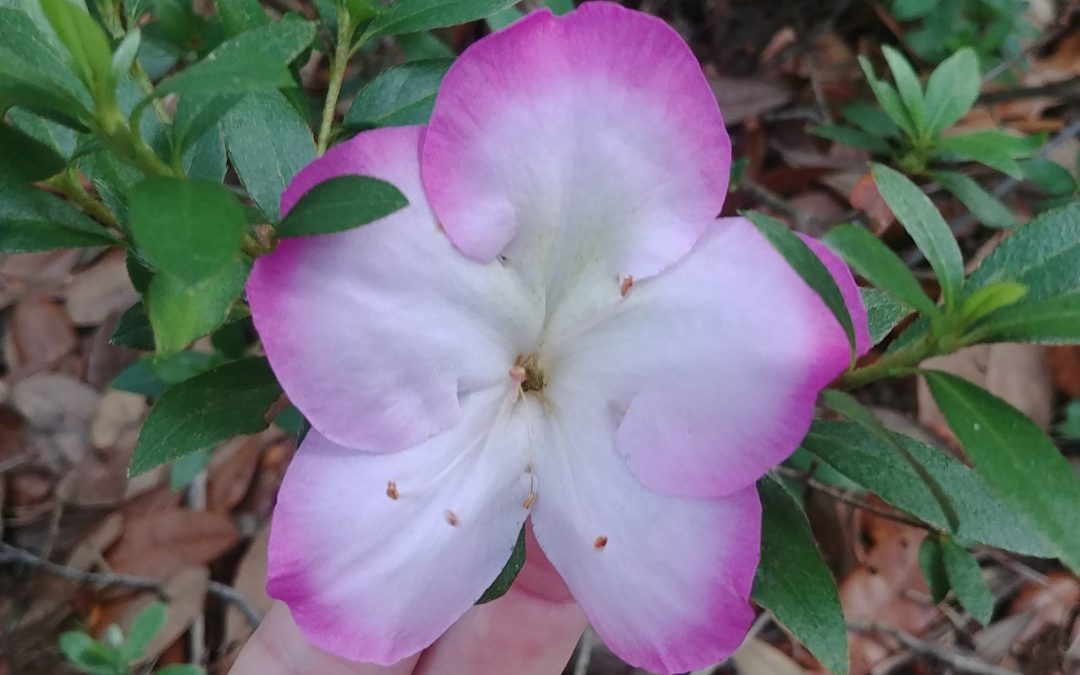
by Matt Lollar | Mar 25, 2021
Article written by Dr. Gary Knox, North Florida Research & Extension Center – Quincy, FL.
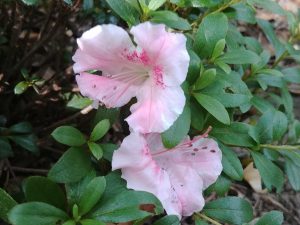
‘Gumpo Pink’ flowers are 3 inches in diameter and are pink with purplish pink dots and occasional white blotches on petals.
Background
In the times before re-blooming azaleas like Encore®, Bloom-A-Thon® and others, Satsuki azaleas were valued for late flowering that extended the azalea “bloom season”. Even with modern re-blooming azaleas, Satsuki azaleas still are appreciated as refined evergreen shrubs for the sophisticated garden or discerning plant collector.
“Satsuki” means “Fifth Month” in Japanese, corresponding to their flowering time in much of Japan. These azaleas were developed hundreds of years ago from their native Rhododendron indicum and R. eriocarpum. The Japanese selected cultivars more for their form and foliage than for flowering. These beloved plants were used in gardens as sheared boxwood-like hedges or pruned into rounded mounds that might resemble rocks or boulders in classical Japanese gardens. Their size and form also made them well adapted for training as bonsai. Most of the Satsuki azaleas in America were introduced in the 1930s by USDA.
Description
Satsuki azaleas are small evergreen shrubs that flower in April and May in north Florida, long after most older type azaleas have finished. Satsuki azaleas also are known for producing large, mostly single flowers up to 5 inches in diameter in colors of white, pink, red, reddish orange and purple. Often the flowers will include stripes, edging, blotches, spots or flecks of contrasting colors (Sometimes all on the same plant!) with more than 20 different color patterns recorded.
Satsuki azaleas have an elegant subtle charm, quite unlike the flashy, over-the-top, heavy blooming all-at-once Southern Indica azaleas like ‘Formosa’ and ‘George L. Taber’. Typically, Satsuki azaleas display a few large blooms at a time, allowing one to better appreciate their size and color patterns as contrasted against their fine-textured, dark green leaves. To make up for a less boisterous display, Satsuki azaleas flower over a longer timeframe, averaging about 8 weeks, with some flowering an amazing 14 weeks. In another contrast, most Satsuki azaleas grow smaller in size, in my experience reaching about 3 feet tall and wide in a five-year timeframe. The rounded to lance-shaped leaves of Satsuki azaleas also are demure, ranging in length from just ½ inch to no more than 2 inches.
Culture
Satsuki azaleas enjoy the same conditions as most other azaleas: light shade and moist, rich, well-drained soil. Mulch regularly to maintain organic matter and help hold moisture. Fertilize lightly and keep the roots evenly moist. Minimal to no pruning is required. Satsuki azaleas also are well adapted to container culture. Their small size and fine textured leaves make these a favorite for bonsai enthusiasts since their small leaves, branching habit and mounded form naturally make them look like miniature mature “trees”.
Sources and Cultivars
Look for Satsuki azaleas in spring at garden centers or year-round at online nurseries. There are hundreds of cultivars but some popular types to look for include:
Gumpo Pink – 3-in. diameter light pink flowers with purplish pink dots and occasional white blotches
Gumpo White – 3-in. diameter white flowers with occasional pink flakes and light green blotches
Gyokushin – 3-in. diameter flowers are predominantly white but with light to dark pink dots and blotches
Higasa – flowers are 4 to 5 inches in diameter and are purplish pink with purple blotches
Shugetsu – also called ‘Autumn Moon’, 3-in. diameter flowers are white with a broad, bright purplish-red border
Tama No Hada – flowers are 4 to 5 inches in diameter and are white to pink with deep pink stripes; usually flowers in fall as well as spring
Wakaebisu – 2.5-in. diameter flowers are “double” (hose-in-hose) and are salmon pink with deep pink dots and blotches; this also flowers in fall as well as spring
References:
Chappell, M. G.M. Weaver, B. Jernigan, and M. McCorkle. 2018. Container trial of 150 azalea (Rhododendron spp.) cultivars to assess insect tolerance and bloom characteristics in a production environment. HortScience 53(9-S): S465.
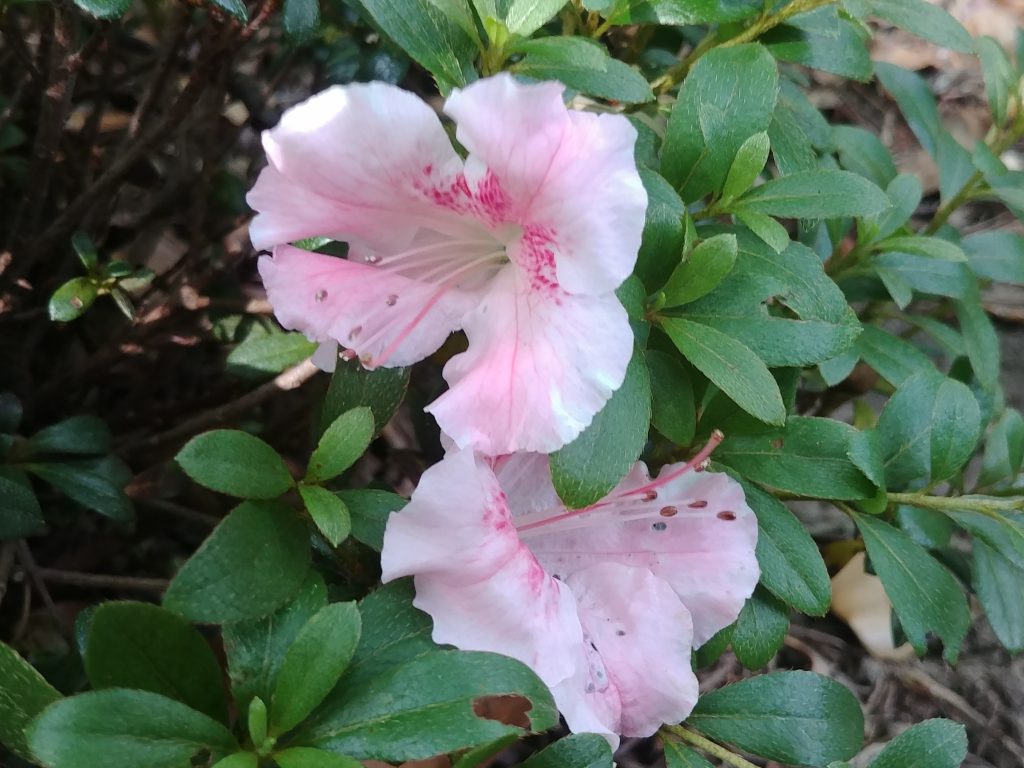
‘Gumpo Pink’ flowers are 3 inches in diameter and are pink with purplish pink dots and occasional white blotches on petals.
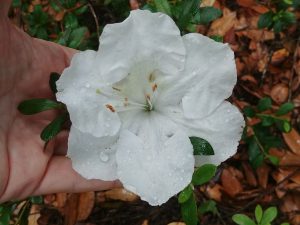
‘Gyokushin’ flowers are white with occasional pink flecks and light green blotches.
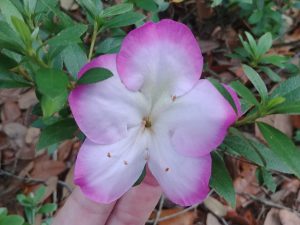
‘Shugetsu’ has 3-inch flowers that have bright purplish-red border on edges of petals.
Galle, Fred C. Azaleas. 1985. Timber Press, Portland, Oregon. 486 pp.
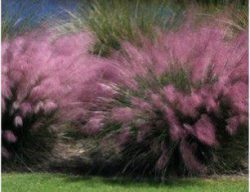
by Sheila Dunning | Feb 18, 2021
The term “ornamental grass” is a catch-all phrase used to describe grasses and “grass-like” plants. Individual species are adapted to a wide variety of landscape sites (i.e., wet or dry, sun or shade, hot or cold climates, and varied salt tolerance). Growth habits range from low ground covers to intermediate shrub-like plants to very tall hedge-like plants. Ornamental grasses are very dynamic; the size, shape, texture, and color of grass changes with every season.
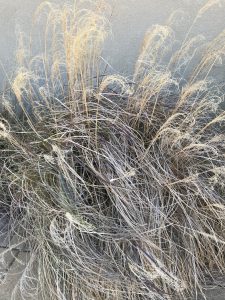
Deciduous Ornamental Grass
Grasses with foliage that dies in the winter and remains dormant until the weather warms in the spring are considered deciduous. The winter character of deciduous ornamental grasses adds tremendous interest to the winter garden when contrasted with evergreen plants or structures such as walls or fences. The dried foliage of deciduous grasses creates sound as it expands and contracts in response to changes in temperature or moisture, while interaction with wind creates movement in the garden. For these reasons, pruning of the dead foliage and inflorescences is not recommended at the time of the first frost.
Pruning of ornamental grasses should be done in late winter or early spring, just prior to new shoot growth. In Northwest Florida, gardeners should target the end of February to prune ornamental grasses. For deciduous grasses, such as Japanese silver grass (Miscanthus sinensis), the old foliage may be completely removed within inches of the soil. Be cautious to not remove the growth point by leaving the grass clump at least 4 inches high. For evergreen grasses, such as muhly grass (Muhlenbergia capillaris), the ragged leaves can be removed to neaten the appearance of the plant without shortening all the way to the ground. So, depending on the damaged portions, the remaining grass clump can be 6-18 inches high after pruning. Grasses recover quickly from a heavier pruning. Within a few months the plant will have completely regrown. If desired, old flower stalks and seed heads may be removed any time they no longer have a neat appearance. For more information on ornamental grass species and growing tips, please visit the EDIS Publication: Considerations for Selection and Use of Ornamental Grasses.

by Matt Lollar | May 17, 2019
Are you looking for more selective herbicide options for annual beds and around shrubs and trees? The Santa Rosa County Extension Office will be hosting guest speaker Dr. Chris Marble from the UF/IFAS Mid-Florida Research & Education Center on Thursday, May 23. Dr. Marble is a Nationally Renowned Weed Scientist who has published numerous research and extension publications. 2 CEUs available in LCLM, Limited Lawn & Ornamental, Commercial L&O, O&T, Natural Areas, ROW, and Private Ag. Pre-registration fee is $15, or $20 registration at the door the day of the event (includes lunch and resources). Pre-register online at Eventbrite Ticket or bring cash, check, or money order to the Santa Rosa County Extension Office, 6263 Dogwood Dr., Milton, FL before May 23. For additional questions, please contact Matt Lollar at mlollar@ufl.edu or 850-623-3868.
SCHEDULE
9:30 Registration & Welcome
9:45 Presentation Begins
11:30 Question & Answer w/Dr. Marble
11:45 Evaluation & CEUs
12:00 Lunch & Discussion on Glyphosate Registration
12:30 Adjourn
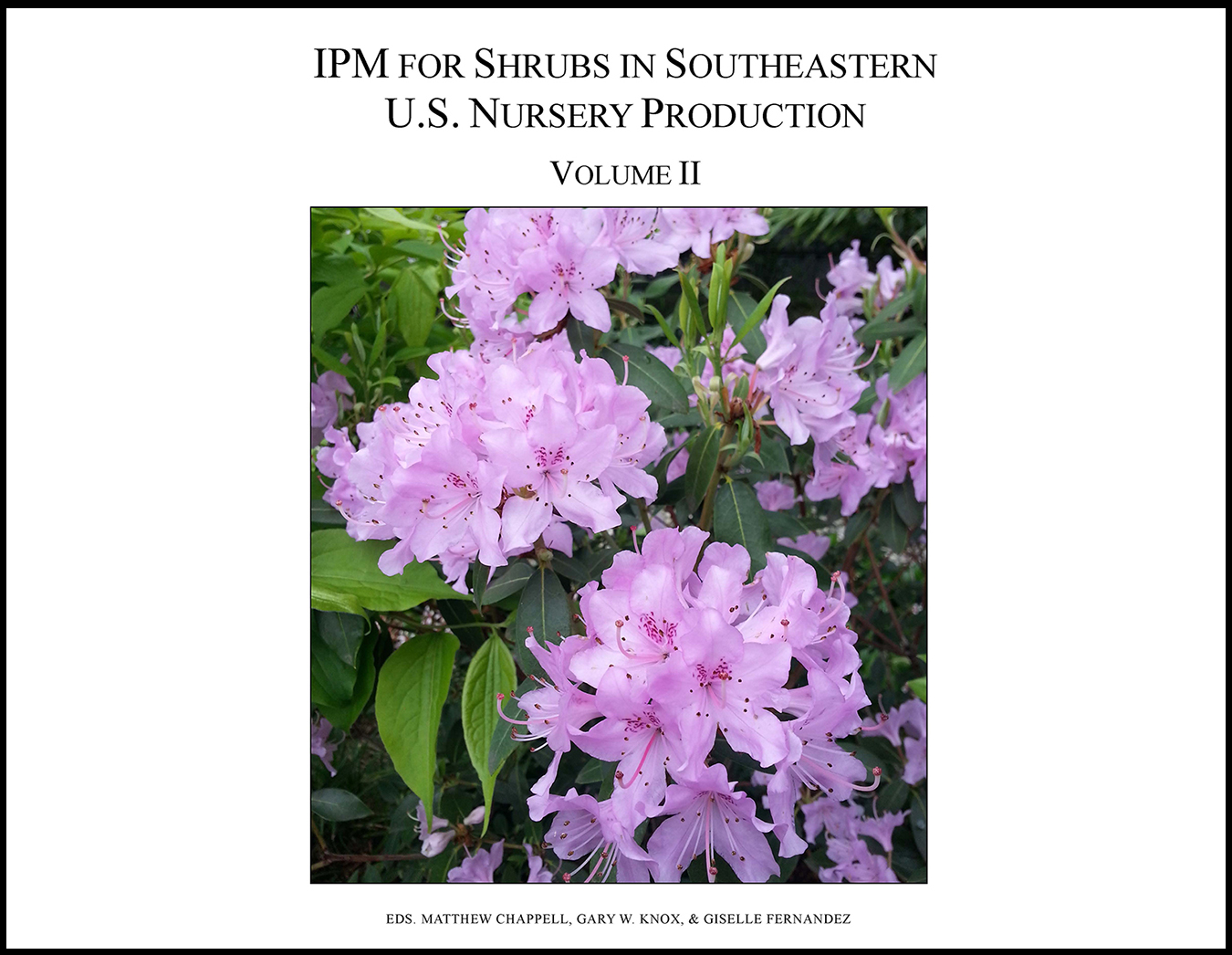
by Gary Knox | Jun 29, 2017

IPM for Shrubs in Southeastern US Nursery Production Volume II is the third book released by the Southern Nursery Integrated Pest Management Working Group (SNIPM) and includes chapters on hydrangea, loropetalum, holly, rhododendron (including azalea), Indian hawthorn, and weed management. Each chapter covers history, culture and management of the major species and cultivars in production, as well as arthropod pest management and disease management. Within the discussion of these topics, each chapter includes strategies for developing effective IPM programs for key pests and plant pathogens, including tables of fungicides and insecticides for use with these key organisms. While developed for nursery producers, this information also may be useful to landscapers, students, arborists and others.
This free book is downloadable as pdf chapters at
http://wiki.bugwood.org/IPM_Shrub_Book_II.
The first book, IPM of Select Deciduous Trees in Southeastern U.S. Nursery Production, was released in May 2012 and is available for free download as chapter .pdf files at http://wiki.bugwood.org/SNIPM and as an eBook from the iTunes Bookstore https://itunes.apple.com/us/book/ipm-for-select-deciduous-trees/id541182125?mt=11.
The second book, IPM for Shrubs in Southeastern US Nursery Production Volume I, was released in June 2014 and can also be downloaded as chapter .pdf files at http://wiki.bugwood.org/SNIPM or from the iTunes Bookstore at https://itunes.apple.com/us/book/ipm-for-shrubs-in-southeastern/id903114207?mt=11.
The SNIPM Working Group is a multi-disciplinary group of Extension professionals formed to more efficiently and effectively develop and deliver educational programming to the southern U.S. nursery and landscape industry.











